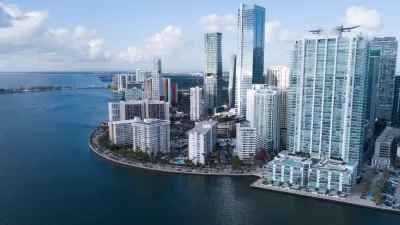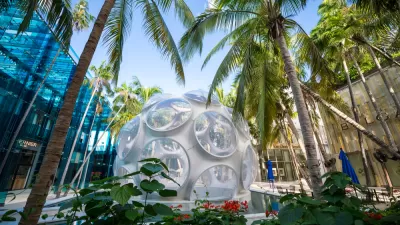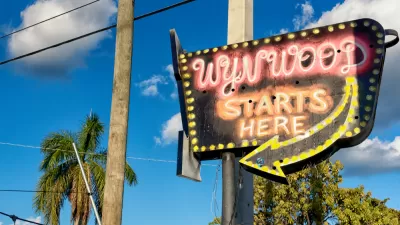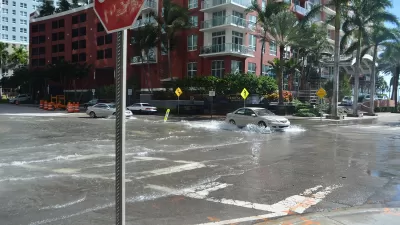Miami 21 was approved in 2009 and heralded as a sign of a new era in zoning. Since then, Miami 21 has been both credited and blamed for the city's transformation.

Andres Viglucci reports on a forthcoming update Miami's zoning code, Miami 21.
Can a simple zoning code — the rules that govern what can be built, and where, and how big it can be — transform a city?
If that code is Miami 21, a once-radical-seeming set of development regulations adopted by the city 11 years ago amid widespread skepticism, the evidence seems to support an emphaticYes [sic].
Viglucci credits Miami 21 with the urban, work-play changes that have come to several neighborhoods in the city in recent years, but also acknowledges the need to update the zoning code for new goals that weren't necessarily on the agenda back in 2009.
Chief among those: Finding ways to promote development of critically needed affordable housing, figuring out new rules for developing projects to meet sea-level rise, reviewing the adequacy of existing zoning for specific city neighborhoods, and addressing issues of equity and gentrification that Miami 21 may have inadvertently helped fuel.
As reported by Viglucci, the city formally launched a special task force of experts and residents, after a COVID-19-induced delay, last week. "Almost certainly, the task force’s 12 members — a mix of architects and planners, developers, land-use lawyers and residents — will wrestle with how, or whether, to limit the massive and sometimes controversial Miami 21 Special Area Plan projects that have become flashpoints of community opposition," writes Viglucci.
FULL STORY: Innovative zoning rules changed Miami. Now Miami 21 may be in for some big changes

Planetizen Federal Action Tracker
A weekly monitor of how Trump’s orders and actions are impacting planners and planning in America.

Chicago’s Ghost Rails
Just beneath the surface of the modern city lie the remnants of its expansive early 20th-century streetcar system.

San Antonio and Austin are Fusing Into one Massive Megaregion
The region spanning the two central Texas cities is growing fast, posing challenges for local infrastructure and water supplies.

Since Zion's Shuttles Went Electric “The Smog is Gone”
Visitors to Zion National Park can enjoy the canyon via the nation’s first fully electric park shuttle system.

Trump Distributing DOT Safety Funds at 1/10 Rate of Biden
Funds for Safe Streets and other transportation safety and equity programs are being held up by administrative reviews and conflicts with the Trump administration’s priorities.

German Cities Subsidize Taxis for Women Amid Wave of Violence
Free or low-cost taxi rides can help women navigate cities more safely, but critics say the programs don't address the root causes of violence against women.
Urban Design for Planners 1: Software Tools
This six-course series explores essential urban design concepts using open source software and equips planners with the tools they need to participate fully in the urban design process.
Planning for Universal Design
Learn the tools for implementing Universal Design in planning regulations.
planning NEXT
Appalachian Highlands Housing Partners
Mpact (founded as Rail~Volution)
City of Camden Redevelopment Agency
City of Astoria
City of Portland
City of Laramie





























